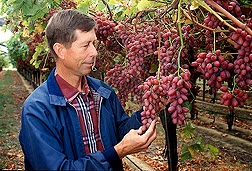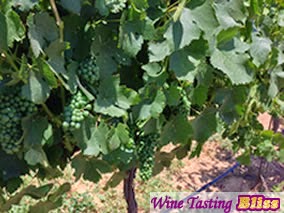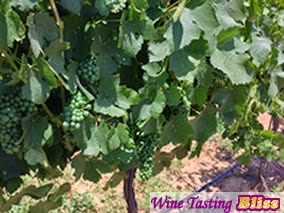After the fall harvest, vineyard managers trim back their grape vines severely. To the untrained eye, the resultant vines look near death. Fear not, this is a time-tested way to preserve the vitality of the grape vine through the long dormant cycle of winter.
As spring arrives, the grape vines come to life, new canes (branches to you and me) emerging from tiny little buds along the main vine. Within a few weeks, flowers start to appear, first as tiny bundles of spherical green dots. These bundles quickly grow and separate into individual flowers.
Grape vines are both male and female so most of the pollination takes place within each vine, which means that bees and birds aren’t really very important to starting the annual grape crop. The fertilized flower drops its petals and becomes an individual grape berry. The race toward wine has begun!
During the months of May, June and July (at least in the Northern Hemisphere) the grapes are growing, but quite immature. The berry is light green and feels solid if squeezed. The grapes increase dramatically in size, pushing their siblings around to make space for each berry in the cluster. At this point, the grape has very little sugar, tastes sour (because of the high acid content) and isn’t very useful to man or beast.
 Then along comes the end of July, maybe the start of August. Now the berries are approaching full size and begin to display their final color. The grapes are now softening, gaining sugar content and decreasing acid levels. You can tell the difference between white grapes and red grapes, finally, because of the secretion of carotenoids for white wine grapes or anthocyanins for red wine grapes.
Then along comes the end of July, maybe the start of August. Now the berries are approaching full size and begin to display their final color. The grapes are now softening, gaining sugar content and decreasing acid levels. You can tell the difference between white grapes and red grapes, finally, because of the secretion of carotenoids for white wine grapes or anthocyanins for red wine grapes.
Now it gets really exciting. The grape clusters reach full ripeness, based on the individual cluster’s exposure to sunlight and heat. Once the majority of the grapes are at the desired sugar level (called brix among the winemakers), the harvest can commence. Nature has now done all it can. From this point forward, it is all up to the artistry of the winemaker!
About the Author: John grills a mean steak and is always in the market for another wine fridge. Believes that if a winery has more than 10 employees, it's probably too big. Buys wine faster than he drinks it, but who cares?



